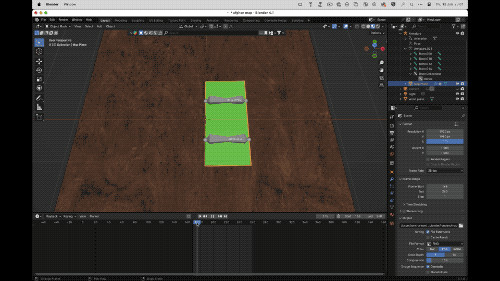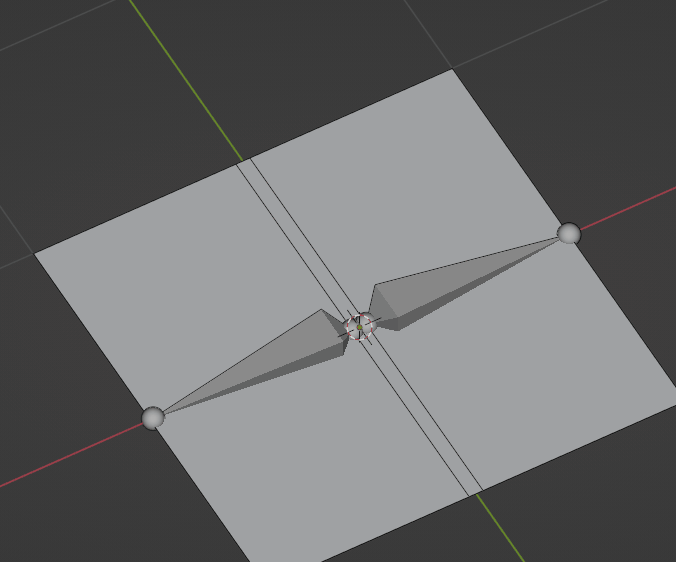I'm trying to animate a map unfolding (inspired by this tutorial for a box unfolding).
I've subdivided a plane, then added bones to it.
I've added a Solidify Modifier to the plane, and defined three textures for the top, bottom, and edges.
When the paper folds up, I see clashes between the top and bottom textures. I don't want my paper to be infinitely thin, but I'd like it to fold up almost flat, like a map would.
My questions:
What's the best way to avoid the clashes, but maintain some thickness?
How would I go about unfolding in multiple directions, like this:
My map currently only unfolds in the x axis. I'd like to also fold it in the y-axis, but wouldn't this require multiple bones attached to the same faces? When I attempt to animate this, my surfaces stretch weirdly, and don't follow the rotation of my bones.
- Is there a more naturalistic way of achieving this, maybe with cloth?
Many thanks








